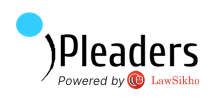This article is written by Kruti Brahmbhatt pursuing Diploma in Legal English Communication – oratory, writing, listening and accuracy from LawSikho.
This article has been published by Anshi Mudgal.
Table of Contents
Introduction
Setting a fair price for the right project is critical in freelance writing. This is one of the basic aspects of winning or losing a freelancing project or deal. It’s vital to understand that correct pricing not only secures your income but also affects your professional relationships with your clients and how many projects you might receive in future. This connects us to the question of our style of approach while talking about the charges.
Currently, the main methods in the industry are charging per word and charging per project. Both have their own advantages and disadvantages, which will be discussed in the article. However, the choice of the method for your freelancing projects depends on many factors, for example, the need for the project, deadlines given, your resources and expertise used, experience, and niche. A comprehensive understanding of all these factors and their application will help you decide the correct charges.
Understanding pricing models in freelance writing
Let’s understand the various types of pricing models available for freelance writers.
Per-word pricing model
The first and most used model for freelance writers, which is also popular and convenient, is the per-word pricing. In this model, the writers agree on a fixed price for each word they write. This allows the parties to calculate the write-up cost and avoid confusion. This method is primarily used in blogs, SEO articles and other content. This method is widely preferred when the client requires the work on an urgent basis and wants a quick estimate for budgeting. For example, a writer charges $0.10 per word, and the article is 1000 words. Here, the writer will get $100 for the article.
Pros of charging per word
Let’s discuss the pros of charging per word:
Straightforward calculations
The per-word pricing method makes it easy for the clients and you to calculate the estimate. This makes the process straightforward, and you are aware of the price the client will pay for your 1000-word blog post. This avoids any hesitation and confusion and makes the process transparent.
Easy to scale
In this method of payment, the faster and more efficiently you write, the more you earn. Initially, writing 1000 or 1500 words in 3 to 4 words might sound a bit difficult, but once you master your writing skills, you can naturally scale your income. However, in this process, you must keep a good check on your quality of work.
Transparent for clients
This method of pricing is the most transparent because the client can easily calculate what they receive.
Protection against scope creep
In this method, the client can’t add tasks mid-project which usually happens in freelancing. This reduces such kinds of possibilities to a huge extent.
Cons of charging per word
The following are the cons of charging per word:
May undervalue complex work
In this model, the amount of research and effort in developing content strategy does not get counted. Many times, you might find it unfair against the quality of the project you provide, especially in the data-driven articles. This is likely to happen since this model is based on word count.
Research time not factored
This model neglects the time and effort you invest in researching the topic and project. In situations wherein you are completely unfamiliar with the topic, you might end up researching and reading for many hours just for a 1000-1500 word article. This time and efforts which you have invested are not equally paid off.
Editing cycles not considered
The other major drawback of the per-word payment is that multiple rounds of feedback and changes you make do not get counted. This is a common pain that most freelancers share, is the time spent on editing and revisions is not compensated. This reduces your effective hourly rate.
Can encourage fluff content
After a period of time when you are kept under immense pressure to meet a high number of words, you may unintentionally write content that might be less relevant or not of adequate quality. This affects your reputation in the long run and dilutes the quality of your work.
Project-based pricing basics
In this type of price model, you come to a rate for the entire project and not just on word count. This price model generally rewards the expertise and expects a well-polished product. This model includes the value of your time, expertise, research editing, etc. The writing projects such as eBooks, website content, case analysis, and case studies, where the complete project is not such about writing, this pricing is used.
For example, you need to create a web page or create a PowerPoint presentation with speaker notes. In this kind of project, the rate might be $500-$2000. This varies based on the requirements of the client and your expertise in the field.
Benefits of project-based pricing
- In this model of pricing, you may include the value of your skills and experience and the efforts you put into the research. This is a better value for your expertise involved in the process, regardless of the word count.
- This model makes the client feel that you are a results-driven expert and are highly professional. There is are high chance that the client will start treating you as a partner rather than just a writer.
- Once you have gained experience in your field then it’s easier to adjust project fees. After building a good portfolio and client record, you can easily increase rates over a period of time.
Drawbacks of project-based pricing
- There is a very high risk of scope creep in this model of pricing. The client might ask you to deliver such tasks such as social media posting or extra revisions, which would be beyond the original agreement. To avoid this, it is extremely necessary to define boundaries.
- Estimating an accurate price for the write-up or project is quite difficult for beginners. There are various factors which need to be considered while calculating the price of a project. Any mistake might bring you to a position in which you have either undercharged or overcommitted your hours.
- As discussed above, many revision requests can reduce your profitability. You can add a clause permitting revisions only twice or thrice. This will limit your excessive back and forth.
Other pricing models briefly explained
Apart from the above two models, there are a couple more models of pricing such as hourly rates, retainer agreements and value-based pricing. Let’s even understand them briefly.
Hourly rates
in this kind of method, you may charge on the basis of the number of hours you have dedicated to the project. However, this method is not so popular in writing tasks, so new clients might agree to it. This method is more suitable wherein you need to consult or give coaching where your hourly commitment matters.
Retainer agreements
Then comes the, where you may charge a monthly fee for a set amount of work. You must stay consistent with the client’s satisfaction; it is of utmost importance in this kind of payment method.
Value-based pricing
It is usually based on the engagement. You may charge based on this model when your content is going to be on-site, where views, minutes people read, and engagements matter.
Hence, these were all the possible pricing models on which you can charge from your client. However, a new freelancer must go for either a charge per word or a charge per project payment method to avoid confusion and much negotiation. Now, let’s learn to calculate your per-word and project-based prices.
How to calculate your per-word rate
The calculation of your per-word rate depends on various factors such as your niche, level or any expertise you offer. You may determine your per-word rate based on the following.
- For freelance writers, usually at the beginner level, you may start at $0.05-$0.20 per word, while when you get experienced, you can charge about $0.50-$2.00 per word.
- Now, you need to adjust your rates based on the skillset or specialisation you possess. Your educational background and work experience as a writer in that field. Being a new writer you should start on the low end and start building a portfolio of work, taking feedback and reviews on your profile.
- While charging a per-word rate, you need to study and research your target market. You must ensure that your rates align with the client’s expectations and are competitive with other freelancers.
- Many times, being a student or researcher, you might be using some subscriptions, software, or any services that you have bought or paid for; make sure to count them in your rate calculations.
The above are very important pointers that you might always keep a check on while deciding your per-word pay. With this now we will learn how to set a price on project-basis.
Setting project-based prices
Unlike per-word pay, the most important thing is the estimation of time. You have to get some good working experience only after that such experience you can get through this process. There is a list you can begin with:
- The primary step is to break down the tasks which have been given to you and make a rough estimate of how much time you will take to complete each part. Since you have the right to charge per project you should make sure that the value of research work should be there.
- In such assignments or projects, it is always advised to have extra time so that there should not be any delays or any client feedback.
- You should always prefer a project-based pricing model in a situation where the project is involved with specialised knowledge and a lot of data is needed for providing the analysis.
- In the last, if you want to avoid revisions and endless editing then you should clearly define how many times you will revise it and how you will charge after a certain limit.
Making the transition between models
In the process of transition from per-word pay to project-based payments you need to keep these points in mind:
- The transition should be smooth when you are planning to grow and give change in the model. Keep in mind that you must not jump in and change the model for all the clients in your network. You must implement the model slowly and should start with smaller projects.
- You should always be transparent and should clearly communicate the changes to the client clearly. You should also make sure that you are giving a sufficient amount of time to the client before you transit your model because this will also affect the payment cycle.
- You can also opt for hybrid approaches in which when you write a blog post you can charge for per-word rates and the projects such as ebooks or work that require more research you can go for a project-based price.
Professional presentation of rates
Presentation of rates demonstrates your knowledge and expertise in the working area. At times quite high or low rate or unprofessional presentation of rates might lead you to lose a project. Below listed are some ideas to avoid such a loss.
- Using a rate card or formatting the rate card in an organised layout, using bullet pointers or tables clearing mentioning your offered services can help you build a good trust.
- Another way to present rates is writing proposals, this allows you to personalise it and lay down every stage. It is preferable, especially for beginners, because it keeps the conversation professional. It also lets you explain the value and benefits of working with you.
- Initially, handling negotiations with clients can be challenging, but setting clear boundaries and clear communication can help you crack it.
Always remember that you need to show that you are the best fit for the project and not that you are the most desperate person.
Frequently asked questions (FAQs)
How do I know which pricing model will earn me more money?
You need to compare it on the basis of the time you are going to invest and the reward you get against it. Keep a check on ROI for knowing which price model earns you more money.
What’s the industry standard rate per word for beginners?
The rate per word typically ranges between $0.03 to $0.10 per word, but it might vary depending on niche and competition.
How do I prevent scope creep in project-based pricing?
Always set limits on revisions and outline terms of the contract to avoid scope creep in project-based pricing.
Should I charge different rates for different types of content?
Definitely yes, you need to adjust rates based on content and data requirements.
How do I transition existing clients to a new pricing model?
You need to communicate the benefits and provide advance notice regarding the same.
What should I include in my project price besides writing time?
You must include research, editing, revisions, and formatting while deciding price besides writing time.
References
- https://www.ashleyrcummings.com/news/how-much-should-freelance-writers-charge
- https://www.upwork.com/resources/freelance-writing-rates
- https://peakfreelance.com/blog/freelance-writing-rates/
- https://bestwriting.com/blog/content-writing-rates/
- https://www.contentpowered.com/blog/freelance-rates-per-word/
 Serato DJ Crack 2025Serato DJ PRO Crack
Serato DJ Crack 2025Serato DJ PRO Crack










 Allow notifications
Allow notifications



